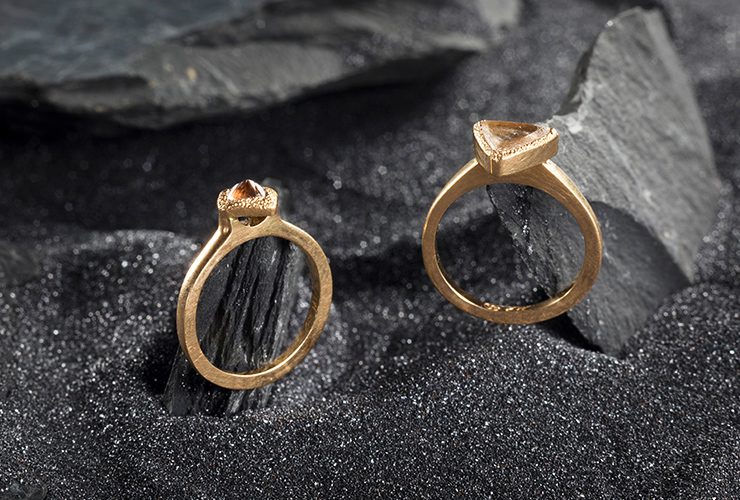Q&A with Sarah Heyward

Sarah discussed with us the unique details behind her exhibition work ‘FORCES.’ Each piece is imbued with her incredible talents and a touch of inter-stellar magic.
What inspired this new collection and the name ‘FORCES?’
I am interested in perspective; how we see the world and ourselves within it. At a time when the forces of nature are defining our course; creativity is a place for understanding and reflection. I have been using rough diamonds for a long time; the Forces collection features exclusively Argyle diamonds from the Kimberly. Their uniqueness and raw nature is engaging. These are a result of thousands of years of pressure upon pressure, precious imperfect pieces of the earth. I curated an exhibition in 2018 using the Forces concept and encouraged artists to reflect on the strength and fluidity in their practice in responding to the forces around us which are out of our control – what we make is an interpretation of our lens of understanding and a culmination of how we know what we know; our perspective which informs our expression. Given the events of the last two years; I wanted to make more work around this theme.

Your work often feels celestial or meteoric, can you tell us why the galaxy has become an ongoing inspiration for your work?
The universe is vast, do we look up to a further understanding of ourselves? The forces of our galaxy, all the light we see and can not see, I find it all fascinating. It has been thought that the twinkling starlight is that of a dying star; however, it is actually low-pressure atmospheric winds bending the light before it reaches our eyes. Stars are formed by the gravitational collapse of a gaseous nebula; all matter is compressed at a central point. Some stars, if given enough mass, turn into black holes at the end of their life. There is endless inspiration in the galactic landscape.
Many of your pieces contain Macle Argyle diamonds, can you tell us a little more about them?
Macle are one of the natural shapes diamond crystals take. Octahedrons and macles are found in the Kimberly, along with flat-ish irregular-shaped stones known as makeables. Macles are first formed as octahedrons, increased pressure from one side causes the crystal to grow into a natural triangular formation. The macle I have used in the ‘Inertia’ ring has a moonscape surface with hexagonal pits which is a feature unique to Argyle. The half octahedrons I have used in the ‘Balance’ rings and pendants also have this moonscape surface. The macles in the ‘Motion’ and ‘Stability’ rings have a smoother surface with trigon growth patterns.

What were some of the challenges in creating these pieces?
The irregular shape of the rough diamonds presents a challenge for setting. With many irregular bumps and corners, each setting must be carefully crafted using hand tools. I have chosen to give a stippled textured finish to the settings to complement the uniqueness of the stones. I have also used sapphires from the Qld gem fields in some of the Forces pieces; pairing them with the galactic fused surface typical of my work. This technique involves fusing gold ‘dust’ to sheet and yields different results each time.

What do you hope people enjoy or discover from seeing and wearing your work?
I hope people appreciate the natural form of the diamond celebrated here; also the spontaneity of the fusion techniques I use. I hope the wearer is given some stability in the face of the forces which act upon us.
You can see more about Sarah and view her collection here.


